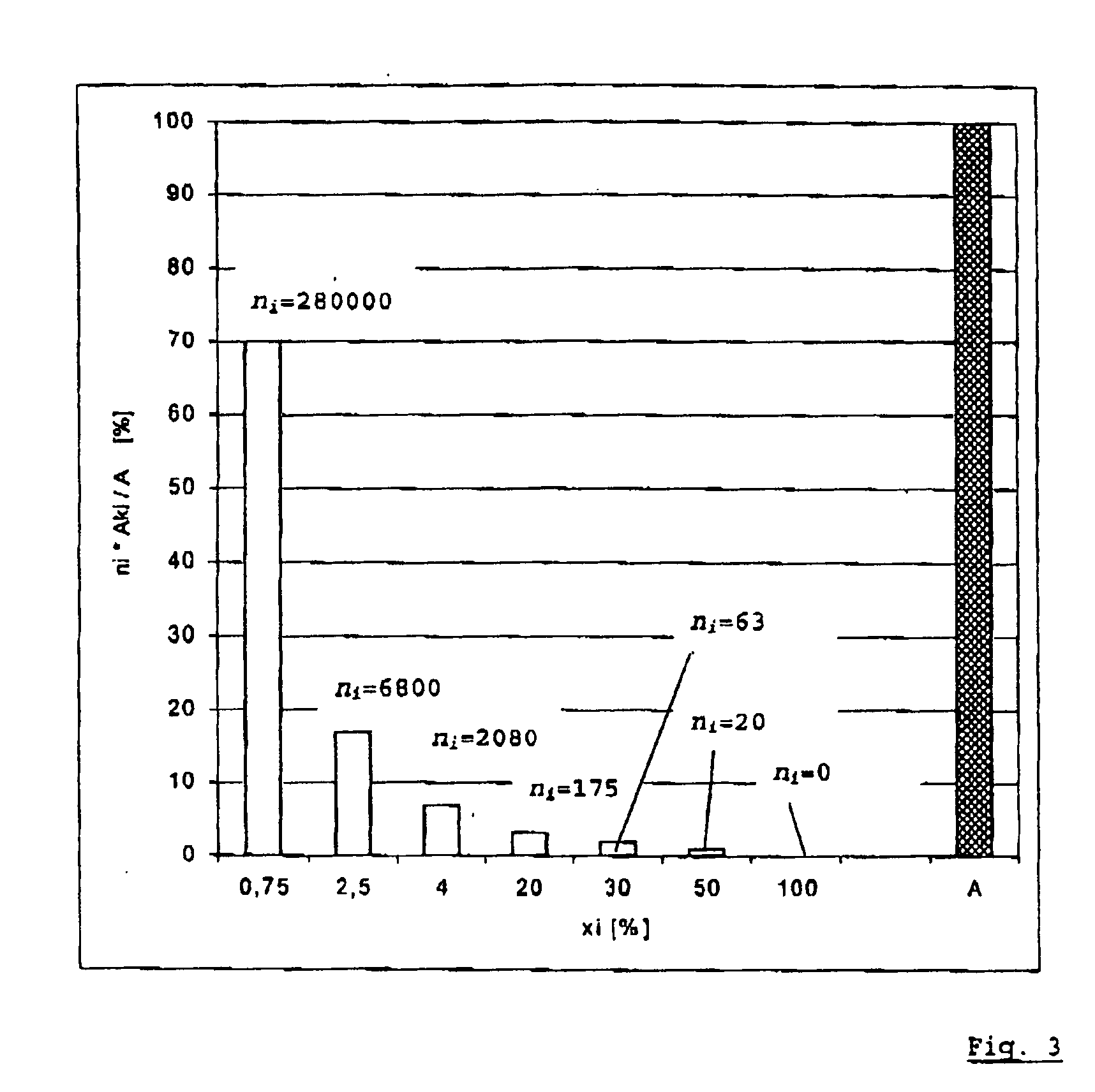Method for determining the deterioration of a battery
a battery and deterioration technology, applied in the field of battery condition monitoring, can solve the problem of comparatively complex procedur
- Summary
- Abstract
- Description
- Claims
- Application Information
AI Technical Summary
Benefits of technology
Problems solved by technology
Method used
Image
Examples
numerical example 1
[0049] The following is a detailed description of the deterioration A of a lead battery, using a numerical example.
[0050] In this context, the cycle life curve of a lead battery having value pairs (xi, yi) is given analogously to the diagram in FIG. 1. In this context, these value pairs are found in columns 1 and 2 of Table 1 shown below. Partial cycles zi are determined from cycles yi in column 2 of Table 1 according to the relationship in equation (3). Characteristic deterioration value Aki, as is shown in column 4 of Table 1, can then be calculated from these partial cycles zi according to equation (4).
TABLE 11234xiyiziAki(DOD)(cycles)(partial cycles)(characteristic deterioration value)1001202400.41666750120024000.04166730200040000.02500020350070000.0142861012000240000.004167520000400000.0025003500001000000.001000
[0051]
TABLE 2123xiniAi in [%](DOD)(number of partial cycles)(deterioration component)10072.9250110.4630631.58201682.40108053.355599314.9836920169.20deterioration A in...
numerical example 2
[0054] In the following, deterioration A of a nickel-metal hydride battery is exemplarily described with reference to a further, more detailed numerical example. This time, weighting factors fi were included in the exemplary calculation as well, without intending to limit the use of weighting factors fi to nickel-metal hydride batteries.
[0055] The numerical example 2 mentioned is now explained analogously to numerical example 1. Analogous to Table 1 already explained above, the corresponding values for xi, yi, zi and Aki are listed in Table 3. They are derived analogously to the values in Table 1 using equations (3) and (4).
TABLE 31234xiYiziAki(DOD)(cycles)(partial cycles)(characteristic deterioration value)100249349860.0200565029191583820.00171330780901561800.00064025998691997380.000501121893243786480.00026452671645343280.00018732947895895780.000170
[0056] Table 4 below serves to represent the influence of the temperature, the corresponding weighting factors fi,T being shown in c...
PUM
 Login to View More
Login to View More Abstract
Description
Claims
Application Information
 Login to View More
Login to View More - R&D
- Intellectual Property
- Life Sciences
- Materials
- Tech Scout
- Unparalleled Data Quality
- Higher Quality Content
- 60% Fewer Hallucinations
Browse by: Latest US Patents, China's latest patents, Technical Efficacy Thesaurus, Application Domain, Technology Topic, Popular Technical Reports.
© 2025 PatSnap. All rights reserved.Legal|Privacy policy|Modern Slavery Act Transparency Statement|Sitemap|About US| Contact US: help@patsnap.com



